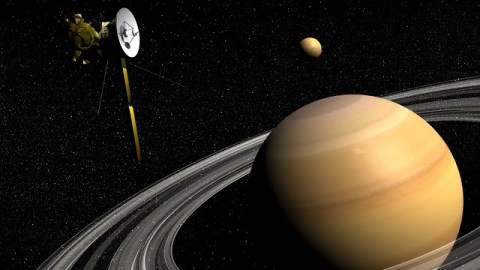Cassini Confirms Existence Of Water Ice On Saturn

What’s the Latest Development?
For the first time, NASA’s Cassini spacecraft has produced near-infrared images showing evidence of water ice on Saturn, made visible due to the power of a massive storm that encircled the planet in 2010-2011. The ice appears in the upper atmosphere, which consists primarily of frozen ammonia, and is presumed to have come from an invisible lower atmospheric layer made up of ammonium hydrosulfide and water.
What’s the Big Idea?
Scientists have long known that Saturn’s moons contained water ice, but they didn’t expect to see it on the planet itself in the quantities revealed by Cassini’s images. Studies of the superstorm showed that it behaved very similarly to much smaller storms on Earth, in which air and water vapor are pushed up to create tall thunderstorm clouds. In a paper to be published in a forthcoming issue of Icarus, co-author and University of Wisconsin-Madison researcher Kevin Baines says that Cassini’s discovery “shows that Saturn [storms] can dredge up material from more than 100 miles [160 kilometers]…It demonstrates in a very real sense that typically demure-looking Saturn can be just as explosive or even more so than typically stormy Jupiter.”
Photo Credit: Shutterstock.com




